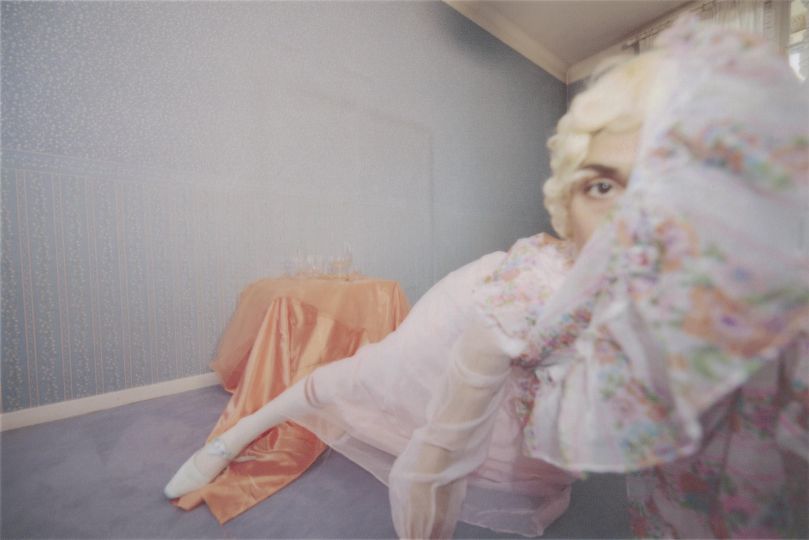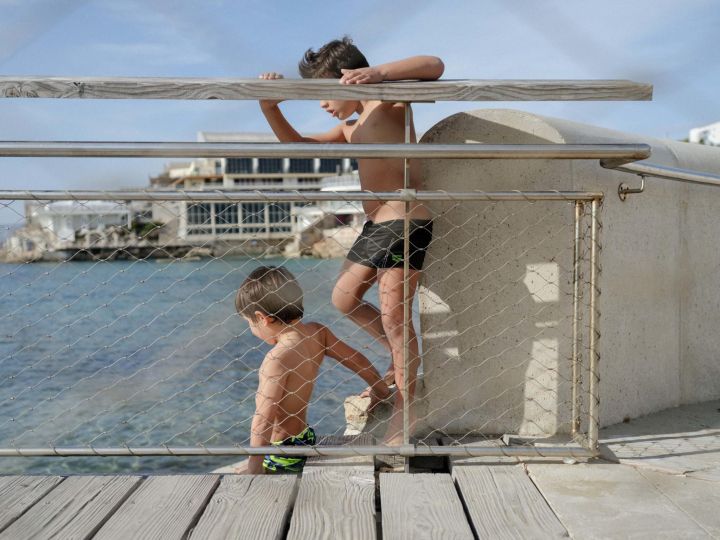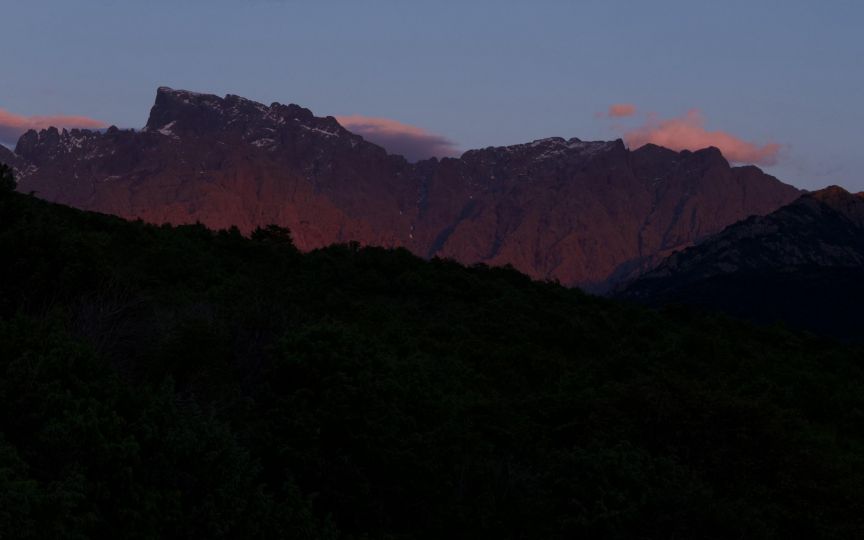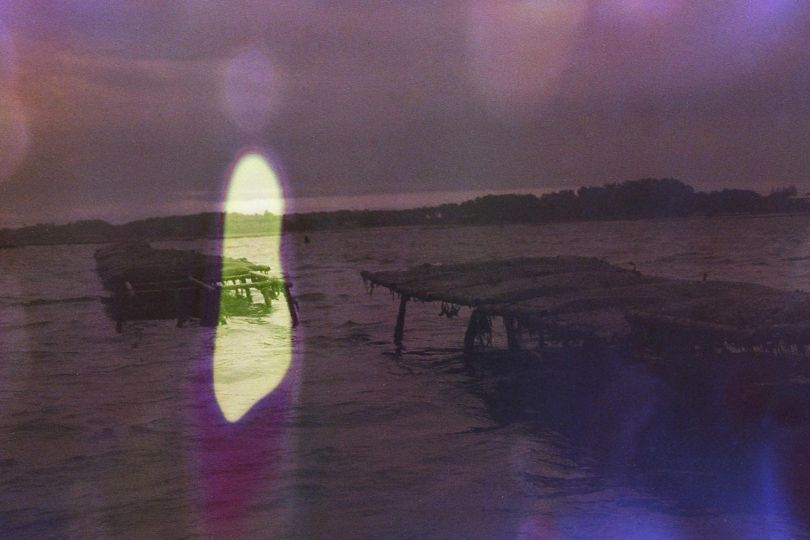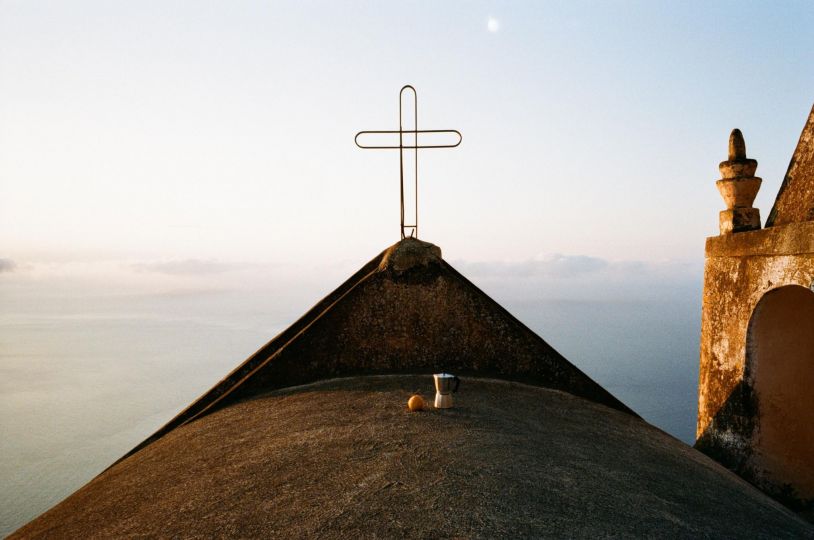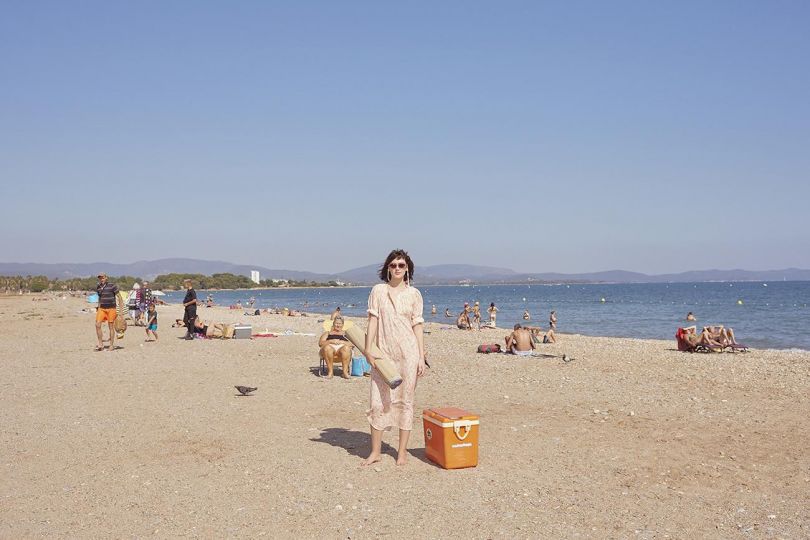The Eye of Photography is releasing the fifth chapter of “Cartes Blanches” with the support of MPB. Each month, a French photographer publishes an exclusive series captured while experimenting with equipment loaned by the international platform for buying, selling, and trading photo and video equipment.
After delving into the wild and disarming beauty of Alicudi through Marguerite de Tavernost’s lens, we joinAnaïs Kugel as she explores her identity and intimacy in a series of self-portraits taken in an admittedly deserted but memory-laden house. This bare walls place, inhabited for three days is bathed in continuous light thanks to the loan of an ARRI SkyPanel S30-C, a Nikon AF-S Fisheye 8-15mm f/3.5-4.5E ED, a Nikon Monture and a Leica SOFORT 2 by the MPB platform.
Some photographic series need no words or explanations, as the artist’s intent is easily recognizable. Anaïs Kugel’s series “When Seabirds Are Far Away” is one such example, appearing neither crude to the eye nor simple to understand. It belongs to the immediately recognizable yet ever-renewed genre of photographic autobiography and remains, above all else, a game, if not a confrontation, between the artist and herself.
Near her own address, Anaïs Kugel found a house recently vacated by the daughters of a deceased person. This house, passed down through three generations, temporarily lost the memory of a person through its grand clearance. In this emptied place, “the kindness of ghosts” remained, according to the artist’s words the discreet trace of a past life and the welcoming atmosphere of an almost bare place. From this past life, shadows of paintings that stayed on the walls for decades, colorful wallpapers, a few lamps, discreet lampshades, and taffeta curtains remained.
However, her photographs inhabit a place with soothing echoes, allowing Anaïs Kugel to find herself, confront recent grief, and face a set of neuroses and sorrows. In her hands, the self-portrait could be considered an affirmation of oneself, the brevity of the present, the fragilities of her being, and the paradoxical strengths drawn from everyday challenges.
Her self-exploration ignores objectivity, preferring a veiled nudity, fragile curves, and the simple silhouette of a cloth highlighting her body. These self-portraits do not reveal her face, which could show emotion, strength, and character, but rather inscribe her sensitivity and present strength through the disguise and preference for borrowed clothes—those of others to better express herself.
Thus, Anaïs Kugel used clothes not belonging to her, collected here and there: light dresses, wedding headdresses, veils faded by time, an almost mystical light ensemble giving her a spectral aura throughout the series. She recalls a poem by American poet Louise Glück that speaks of the burdens and sadness formed by clothes that have become symbols:
Louise Glück – Here Are My Black Clothes
I think now it is better to love no one
than to love you. Here are my back clothes,
the tired nightgowns and robes fraying
in many places. Why should they hang useless
as though I were going naked? You liked me well enough
in black; I make you a gift of these objects.
You will want to touch them with your mouth, run
your fingers through the thin
tender underthings and I
will not need them in my new life.
In her images, self-representation first seems to be a confrontation with her own physical and psychological limits. She shows a languid fatigue, a cautious distance from the fantasy of total representation, suggesting instead the multiplicity of readings, sensitivities, and characters in one being. A moving being, with strong postures and suspended gestures, an enigmatic self that blurs the possibility of a clear image and prefers to play with mystery and enigmas.
The lighting made possible by MPB and the loan of the ARRI SkyPanel S30-C reinforce this spectral presence—a self that escapes, flees from itself, yet strikes the retina with its softness in the image. The use of a Nikon AF-S Fisheye 8-15mm f/3.5-4.5E ED, a Nikon mount and a Leica SOFORT 2 allowed the photographer to create close-ups and tight details, building up the intimate effect of the series. Anaïs Kugel’s ensemble “When Seabirds Are Far Away” is undeniably a disconcerting self-representation. It presents self-portraits that are not, where a form of melancholy, a relationship with death and sorrow, but also a latent joy in representing oneself, escaping oneself, and freezing oneself, can be read. In this, she expresses the multiplicity of a being and its paths of interpretation.
Anaïs Kugel
Anaïs Kugel is a French photographer and film director born in 1988 in Montauban. At the age of 16, she developed her first photographic eye during a year abroad in the United States and became passionate about images. She was commissioned by Rape Crisis Scotland for the campaign “This Is Not An Invitation To Rape Me,” with photographs displayed on billboards across Scotland and presented at the Scottish Parliament.
In 2012, her work was exhibited at the Carte Blanche gallery in San Francisco as part of the exhibition “This Is Your World,” while she won the Manifesto festival for her series on women’s work in agriculture (“Small boots have big feet”).
She has collaborated with numerous newspapers and magazines, including Libération, Vogue, and Milk Magazine. In 2022, her project “Sex Workers” was selected for the exhibition “Radioscopy of the French Territory,” as part of a major photographic commission ordered by the French Ministry of Culture and displayed at the BNF in the exhibition “France Under Their Eyes.”
The artist and The Eye of Photography warmly thank the photographic equipment resale platform MPB for their support and the loan of different gears. The Carte Blanche column would not be possible without their contribution.
More information

